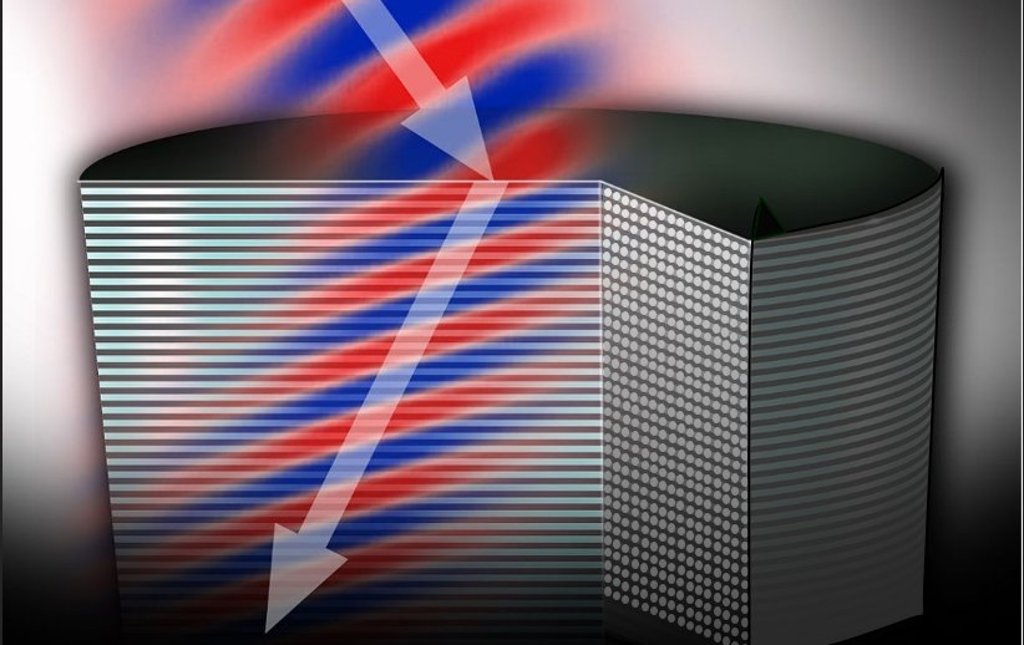Invisibility Cloak Research Moves Forward at Michigan Tech
Michigan Technological University’s invisibility cloak researchers have done it again. They’ve moved the bar on one of the holy grails of physics: making objects invisible.
Just last month, Elena Semouchkina, an associate professor of electrical and computer engineering at Michigan Tech, and her graduate student, Xiaohui Wang, reported successful experimental demonstration of the use of non-conductive ceramic metamaterials to cloak cylindrical objects from microwave-length electromagnetic waves. Previously, Semouchkina had designed a non-conductive glass metamaterial cloak that worked with infrared frequency waves, which are shorter than microwaves.
Then, scarcely was the ink dry on their report in the IEEE Microwave and Wireless Components Letters, a journal published by the Institute of Electrical and Electronics Engineers, when they developed a different cloaking approach and published it in the American Institute of Physics journal, Applied Physics Letters.
This time, they used ordinary dielectric materials such as ceramics having differing dielectric permittivity—a measure of the response of a substance to an electrical field— instead of metamaterials, which are artificial materials with properties not found in nature. They found that they were able to cloak larger cylindrical objects and cloak them more effectively than they had using metamaterials.
This research, just published online and supported by the National Science Foundation (NSF), also won Wang an honorable mention in an IEEE student papers competition. Wang’s paper will be listed in the Technical Program Booklet at an upcoming IEEE International Symposium on Antennas and Propagation. He received $1000 IEEE grant to travel to the symposium to present this work.
According to their report in the Applied Physics Letters article, Semouchkina and Wang designed a new kind of cloak that uses a very thin multilayer dielectric coating made of natural material, not metamaterial. They compared it through mathematical analysis and computer simulations to a metamaterial cloak of similar size but based on a different principle, called transformation optics.
“The new cloak demonstrated better cloaking efficiency than did a similarly sized metamaterial cloak designed by using transformation optics relations,” said Semouchkina.
The new cloak outperforms previous cloaks, which caused more reflection and more shadows, as well as distortion of the electromagnetic waves, the researchers reported. It is eight to nine times thinner than metamaterial cloaks and much simpler to make, they noted.
“The multi-layer dielectric cloak could easily be scaled to work in a variety of frequency ranges,” Semouchkina said. “The design procedure developed in this work could be used to further advance the cloak parameters and for adjusting it to practical needs.”
Cloaking may sound like a magic trick or something out of a movie, but it could prove useful in national security, law enforcement or other applications.
Michigan Technological University is an R1 public research university founded in 1885 in Houghton, and is home to nearly 7,500 students from more than 60 countries around the world. Consistently ranked among the best universities in the country for return on investment, Michigan's flagship technological university offers more than 185 undergraduate and graduate degree programs in science and technology, engineering, computing, forestry, business, health professions, humanities, mathematics, social sciences, and the arts. The rural campus is situated just miles from Lake Superior in Michigan's Upper Peninsula, offering year-round opportunities for outdoor adventure.




Comments